William Kester's Ancestors |
Click on a name for info, click on an arrow to follow that branch, click Home to go to the main page, or click for an Alphabetic List of all Names. |
Arrows are disabled at this time. |
| Note: Before 1752 the year began on March 25th. Dates between January 1st and March 24th were at the end of the year, not the beginning. |
Paul Kester was born about 1706 in Germantown, Pennsylvania, (now part of Philadelphia). He was the fifth of six children born to Johannes Kester at age 36, and Elizabeth Cassell 34 years old. His parents were Quakers, and he had a birthright membership with the same society, but whether he retained his membership is not certain. From 1683 to 1730 Germantown consisted of small wooden houses and muddy roads, but here was nevertheless found the center of Germanic intellectual and religious ferment. ( Mouse over image left for more info.To view a map of Germantown with Paul's lot indicated by a green circle, click here. It will open in a new window.) Several protestant denominations have their founding mother church on Germantown Avenue; Sower spread bibles and prayer books up and down the Appalachians. Sometimes, to distinguish Germantown from the upper portion of German township, outside the borough, the township portion was called Upper Germantown. Paul married Ruth Kitchin on November 17, 1730 at the First Presbyterian Church of Philadelphia. See Ruth below for children. Ruth died in 1744, leaving Paul with six young children. Two years later in 1746 Paul Kester died at age 40 probably in Germantown, Pennsylvania, leaving his six young children orphaned. It is believed that three of his children were taken in by Paul’s brother Hermanus. |
| ~<^>~ |
Ruth Kitchin died in 1744, possibly in childbirth with John, in Germantown in Philadelphia County, leaving her husband with six young children. |
| ~< Back to Chart >~ |
Johannes Kester was born on December 10, 1670 in Krefeld, Rheinland, in what is now Germany. He was the second of ten children born to Paulus Köster at age 24 and Gertrude Doors at 22 years old. The following was taken from the book The Pound and Kester Families: “The name of 'Kester' is derived from the German word 'Küster' or 'Kuester,' which is closely allied to the Holland family name of 'Köster.' The word 'Kiister' is difficult to pronounce in English and probably for this reason has been changed by different American families to the form of 'Kester, Koster, Custer,' and other similar names.”
The records show they were living at Bristol in 1693, and moved into Germantown by the Fall of 1694. With his brother, Hermanus, he purchased 200 acres of land near Skippack, in 1704, in what is now Montgomery County, where the family settled. This farm is located about one and one-half miles from Evansburg, Pennsylvania. Johannes’ family, apparently moved back into Germantown by 1706, while Hermanus’ family stayed in Skippack. Johannes Koester and Elizabeth Koester were witnesses to a marriage certificate on April 14, 1694. Johannes Koster brought suit and recovered from Johannes Pottinger three shillings for an assault which was charged in his complaint, filed in court, to have occurred at Germantown, January 19, 1694. Johannes Kosters made a gift of three pounds to “German friends in need” December 25, 1699, and it is a tradition among his descendants that Johannes was a surveyor and helped survey the State of Pennsylvania, for which he received land as pay for his services. Johannes Kuster was, in 1695 to 1697, 1700 and 1706, a constable, and in 1707, one of the Burgesses of Germantown, and “was in this last named year complained of for marrying a couple outside of the corporation limits.” In 1706, Johannes and about 150 other residents, petitioned the Governor and Council of Pennsylvania, stating that those who were naturalized 22 years ago, worked hard to develop the land and were loyal subjects of England, but were not being treated as such. They requested “that they may have an undoubted right to hold, enjoy, alienate, sell & dispose of any of their Lands, as the natural born subjects of England may or can do in this Province, & also that they may be capable of Electing & being elected, to serve in Assembly & other Offices.” This petition took three and a half years to become a bill, which was introduced and passed, but Johannes didn’t live long enough to see it become law. The Philadelphia Register of Wills, Book B, page 70, shows that October 23, 1708, Elizabeth Custers, a widow of Germantown (with Arnold Cassell of Philadelphia County, and Thomas and Peter Shoemaker of Germantown, as bondsmen on a bond for two hundred pounds), was appointed administratrix of the estate of Johannes Custers. The inventory, amounting to ninety-five pounds, was dated the October 11, 1708; and on August 3, 1709, Johannes Kosters, son and heir, and “Elizabeth, relict of Johannes Kosters, decedent” of Philadelphia County, conveyed by deed to Daniel Falkner, land in Springfield, Philadelphia County, Pennsylvania. Johannes Kester died before October 11, 1708 in Germantown, Pennsylvania, and is probably buried in a Quaker cemetery there. |
| ~< Back to Chart >~ |
Elizabeth Cassell was born about 1672 in Kriegsheim, Rhineland Palatinate, Germany. She was the third of five children born to Johannes Casell at age 33 and possibly Mary Graeff at 29 years old. She arrived in the New World on the ship Jeffries with her father and siblings on March 20, 1686. The Pound and Kester Families complied by John E Hunt states, “The minutes of the Abington monthly meeting of Friends show that 'Johannes Custer' was married August 31, 1692, to Elizabeth Cassell. She was a daughter of Johannes Cassell or Kassell, a weaver who came to Germantown with his family from Kresheim, Germany, in 1686. The records of the same meeting also show that 'Johannes Kosters' and Elizabeth, his wife, had a son, John, born at Bristol, June 9, 1693, a daughter, Margaret, born at Germantown, August, 13, 1694, and a son,
Rynier, born at Germantown May 26, 1696, and the records of births of this meeting from 1697 to 1730 are lost, but it is known they had a son Hermanus, born the November 2, 1703, and a son Paul, born about 1706, and probably a son Peter, the date of whose birth is unknown. Some researchers say Elizabeth Cassell Kester died on January 8, 1728, and is buried in Germantown, Philadelphia, Pennsylvania. But information contained in her son, Hermanus Kester’s October 3, 1732, marriage record makes this death date impossible. On that date he produced his mother's written consent to the marriage. |
| ~<^>~ |
William Kitchin was born about 1690 probably in Philadelphia County, Pennsylvania to Thomas Kitchin and Mary Mace.William's father died in 1694 and his mother either remarried or died a few years later, possibly leaving William an orphan at age 7. W.W.H. Davis wrote in his book The History of Bucks County, Pennsylvania, that William “was the first of his name in Solebury.” This supports the theory that William was on his own at an early age. In the Early History of New Hope article on the New Hope, PA website, it gives us a glimpse of William’s early life. William, who was a weaver by trade, met John Wells one day by the roadside. William, a young man alone in a new town, was very depressed because he could not get work. John took him home with him and took him in said “If thou wilt stay with me, thou shalt never want.” This was the beginning of a new life and friendship for William. Living with the Wells family was Rebecca Norton, a niece of John Wells. William and Rebecca were married in 1713 and had five children.See Rebecca’s bio for more about the children. In 1721, William purchased a strip of land totaling 150 acres from John Wells on the bank of the Delaware river, upon which he built a house. It is said, this was the first house in what would become New Hope, named because of his new hope for humanity, founded on John Well's kindness.
“In the Name of God Amen, the Eighteenth Day of July in the year 1723, I William Kitchen, of Solebury, in the County of Bucks [?], being very sick and weak in Body, but of perfect mind & memory. Thanks be given unto God therefore calling unto Mind the mortality of my body, & knowing that it is appointed for all men once to dye, doe make and ordain this my last will and testament, that is to say, Principally & first of all, I give & recommend my soul unto the hands of God that gave it, & for my body, I recommend it to the earth, to be buried, at the discretion of my Executors, nothing doubting but at the generall resurrection I shall receive the same again by the mighty Power of God, & as touching such worldly estate wherewith it hath pleased God to bless me in this life. I give Devise & Dispose of the same in the following manner and form: Imprimis. I give and bequeath to Rebecca, my dearly beloved wife, all my personal estate, to doe with & dispose off as she may think fitt while she keeps in her widowhood, & then to have her Thirds of all & no more. Item. I give to my well beloved son, Thomas Kitchen, whom I likewise make, Constitute & ordain my only heir of this my last will and testament: all & singular lands & messuages by him freely to be possessed & enjoyed & that when he shall come to the age of twenty one years~ And Further I will & Bequeath five pounds to my son, William Kitchin & three Pounds Ruth Kitchin & three Pounds Olive Kitchen & three Pounds Mary Kitchen, all to be paid when they shall come to the age of twenty one years. All to be paid by my well beloved son, Thomas Kitchen. I Further will & ordain Joseph Ashton of the County of Philadelphia & John Wells, of Bucks County, to be my Executors to take care of my Children & to take care to put them to Trades & all the rest of my Children to be taken care off that they may have good Places if need require & I Doe hereby utterly Disallow, Revoke & Diesanull all & every other former Testament: wills & legacyes, Requests & Executors by me in any ways before this time named willed and bequeathed, Ratifyed & Coinprized this & no other to be my Last Will & Testament: In Wittness where of I have Here unto sett my hand & Seal the Day and year above written. William Kitchin (Seal). Signed, Sealed, Published, Pronounced & declared by the said Wm. Kitchen as his Last Will & Testament in the Presence of us, the Subscribers, John Holcombe & Samuell Coate.” John Wells was a co-executor of his will, which was proved by John Holcombe on May 15, 1727, in Solebury, Bucks County, Pennsylvania. (Mouse over and click on Will image left to enlarge in a new window/tab.) |
| ~< Back to Chart >~ |
Rebecca Norton was born on February 26, 1691 in Solebury Township, Bucks County, Pennsylvania. Her birth is recorded as Rebekah Wells, in the Abington Monthly Meeting minutes in a listing of three children of John and Olive Wells. Her parents are not known, as they apparently died when she was still very young. She lived with her aunt and uncle, in what is now New Hope on the Delaware River, the oldest town in Solebury Township. Norton was the maiden name of John’s mother Mary, so it’s probable that Rebecca was the daughter of Mary’s brother. Rebecca had a brother named John Norton, who was a schoolmaster in Bucks County. It is not known if he also lived with the Well’s family, but he is mentioned in John Wells Jr’s will. In John Norton’s own will he leaves his entire estate to his Beloved Nephew Samuel Crook, (assumed to be Mary Kitchin’s young son) and names his Beloved Brother-in-Law William Kitchin as his sole executor. What is interesting is in this Quaker based family, John Norton states that if Samuel Crook dies before coming of age, the inheritance goes to “Charles Beatty, Minister, to be by him Employed for the use and Service of the Presbyterian College.” Rebecca met her future husband when her uncle took in William Kitchin when William was unable to find work. William and Rebecca were married in 1713 in Bucks County, Pennsylvania, when she was about 22 years old. They had at least five children – eldest child ancestor Ruth; Olive about 1718, who was probably named after Mrs. Wells, married John Heed and then Reese Davis; Mary about 1721, possibly named after William’s mother, married Samuel Crook; William on June 15, 1721, married Sarah Crook on December 28, 1743, and then 10 years later married Sarah Ely; and Thomas about 1723, who could have been named after William’s father. In volume 2 of The History of Bucks County, it states, “Thomas Kitchin inherited his father’s real estate in Solebury, but sold it soon after his marriage and removed to Philadelphia county.” After William died in 1727, Rebecca married farmer Thomas Phillips and had two children with him – Aaron about 1730 and Thomas. Rebecca’s second husband Thomas Phillips wrote his will on December 17, 1748, and in it, he mentions his wife Rebecca, two sons and makes his son-in-law William Kitchin, one of his executors. His will was proved on on January 2, 1748/49. A few weeks later, on January 23, 1748/49, her cousin, who she considered her brother, John Wells Jr, died. It is not known when Rebecca Norton-Kitchin-Phillips died, but it was after her second husband died. There is a burial record for a Rebecca Kitchin in section B-2-14 in the Solebury Friends Burying Grounds, but the stone is too worn to read. The picture at right was taken at the end of row B-2, showing the unreadable stone just past the stump. She may have been buried with her first husband. There is also a grave without a stone for a Thomas Phillips in this same cemetery. |
| ~< Back to Chart >~ |
Paulus Kuester was born about 1644 in Kaldenkirchen, Rheinland-Pfalz, (later part of Germany), to Arnold (Arets) Küster and Catharina Von Haren. It was two years after the end of the Thirty Years War, which was devastating to Germany. It is estimated that the German states lost 15-30% of their population, 50% of the male population. Germany was broken up into many territories and its power was decentralized. Foraging French soldiers had ravaged the German Rhineland. Many people, probably thousands, were burned at the stake during the religious wars. Rape and pillage were common practice. When Paulus was about 22, he married Gertrude Doors on October 16, 1668 at the Reformed Church in Kaldenkirchen, where they lived and had ten children – see Gertrude’s bio below for more on the children. In the period 1660 to 1680, several Quakers including William Penn visited Holland and the Rhine Valley of what would later become Germany, and organized gatherings where they preached the ideas of George Fox The Quaker. William Penn's mother was Dutch and it is likely he spoke the local languages. Many people, including some who had been Mennonites in Krefeld, in what was then Holland, and Krisheim, in the German Palatinate, converted to the new Quaker faith. And then one day William Penn arrived with a brand new idea. The King of England had given him a huge stretch of uninhabited land in the New World, no doubt influenced by the idea that Quakers were a nuisance and this was a good way to get rid of them. And so, if you lived in a little farming village in this region, and an Englishman named William Penn came around with an offer to immigrate to his peaceful kingdom in America, it sounded wonderful. Religious toleration was an important part of the attractiveness, and nowhere to be found in Europe. Thirteen Quaker and Mennonite families left Krefeld in 1683 on a ship called The Concord and headed for the New World.
In 1684, two probable relatives arrived in Germantown: a Herman Dors, almost certainly a relative of Gertrude, from Krefeld; and a possible relative of Paul’s, Heinrich Bernhard Koster, arrived with the band of Pietists later known as “the hermits of the Wissahickon.” They were nominally Lutherans and their faith included mysticism and astrology. Koster held services three times a week in Germantown and moved the church to Philadelphia when it became too large for Germantown. Out of this movement finally grew a congregation of the Church of England- Christ Church, on Second street, Philadelphia. Koster eventually left the church and returned to Germany where he lived to the age of 98. It is not known when Paulus and Gertrude came to America, but it probably was between 1693 and 1700. There are conflicting records which confuse the timeline: The name of Paul Küster is listed on a tax record of persons residing in Germantown in 1693. But in 1696, they were listed as sponsors of their twin grandchildren in Krefeld, a city located on the lower Rhine near Holland where they probably sailed to America from. It could be that they were in America by 1693, but went back to Germany for the Christening, or possibly that Paul was in Germantown, while his wife was still in Krefeld. Paul was chosen a committeeman of the corporation of Germantown, December 2, 1700. The records show that he purchased fifty acres of land from Henry Bucholtz on December 4, 1704, and he was appointed overseer of fences for Germantown on January 5, 1706. Paul and his sons, Arnold and Hermanus, were members of the Mennonite Church, while ancestor Johannes became a member of the Society of Friends or Quakers. The Philadelphia Register of Wills, shows the estate of Paul Küster and Gertrude, his wife. He left a nuncupative will, said to have been reduced to writing by Francis Daniel Pastorius, one of the prominent citizens of Germantown, It is dated January 28, 1707-8, and is signed by his sons and by and sons-in-law Dennis Cunders and Cornellis Dewees. His will, which was copied from the original record in Will Book C, Page 72, - No 58, is printed in Milo Custer’s 1944 updated book, Custer Genealogies, and reads as follows: “Germantown in the Co. of Phila. the 28th day of the 11th Month called January, Anno Dom. 1707-8. Paul Kuster, Mason,* being sick in Body, but of perfect Memory and disposing Mind, declares before us, the hereto Subscribers, Witnesses, that his last Will and Testament was as follows.-Viz. That all his just debts shall be paid and that after his decease his loving wife, Gertrud Kuster, shall have all and Singular his Estate, real and personal, during the Term of her Life, and yt after ye Death of ye sd. wife, the sd. his Estate, real and Personal, shall, nothing at all Excepted, be devided and shared among his children Equally, share and share alike. In Witnesses whereof we have hereunto set our hands and Marks, Arnold Gustur, Dennis Cunders, Harmanus Kusters, Johannes Kusters, the mark of K, Cornelis Dewees.”Endorsed, “Philad. Feb. 23rd, 1707-8.” The will was proved February 23, 1707-8, by Dennis Cunders and Cornelius Dewees. The inventory of the estate is signed by Dennis Cunders and Peiter Keyser. On the same day on which this will was proved, letters of administration were granted by Lieutenant Governor John Evans, to Arnold Kusturs, Hermanus Kusturs and Johannes Kosters (named also in the letters as Arnolt Kustur, Hermanus Custers and Johannes Kosters, and as Arnolt Custurs, Hermanus Custurs and Johannes Custurs), all of Germantown, yeomen, on the estate of “Paul Kiister, and Gertrude, his wife,” wherein it is stated that Gertrude Kiister died soon after her husband.
Paulus Kuester died in the early part of 1708-between the date he wrote his will, January 28, 1707/8 and the date it was proved, February 23, 1707/8 in Germantown, Pennsylvania at the age of 62 and is buried there in the Germantown Mennonite Cemetery pictured. His wife, Gertrude died soon after. |
| ~< Back to Chart >~ |
Gertrude married Paulus Kester on October 16, 1668, in Kaldenkirchen and they had ten children baptized there – Arnold on June 9, 1669; ancestor Johannes; Mattys on June 12, 1672 (died in 1673); Matthys also called Matthias on December 6, 1671; Renier on December 2, 1674; Anna on December 26, 1677; Hermanus on October 19, 1681, who probably died as an infant; another Hermanus in March of 1682; Catrin on March 9, 1687; Eva about 1687/8, who married Godshalk Godshalk; and Margaret, born about 1690, who married Cornelius Deweese in 1708. It should be noted that some researchers say the last two girls were born in Germantown, which is possible, as birth or baptism records haven’t been found in Kaldenkirchen for them. Unfortunately, records for their births in Germantown have also not been found. In 1688, five years after its founding, Germantown became the birthplace of the anti-slavery movement in America. The 1688 Germantown Quaker Petition Against Slavery was the first protest against African American slavery made by a religious body in the English colonies. It was based on the Golden Rule and argued for the equal rights of all people. Wikipedia states that this petition was written at a meeting held in the house of Gertrude’s sister, Helene, wife of Thones Kunders. Gertrude Doors Kester died within days of her husband’s death sometime between January 28, 1708 and February 23, 1708 in Germantown, Pennsylvania, and is buried there in the Germantown Mennonite Cemetery pictured above. (Note by Grace Ebneter, Custer researcher) Some of this information was updated in the 1980s when a German scholar researched the people who settled Germantown, Pennsylvania. More recent research is based on translations from church records in Germany, which were not available at that time or at least not found until studies by Wilhelm Niepoth of Germany were translated (in the 1980s) and Chester Custer wrote The Kusters and Doors of Kaldenkirchen, Germany and Germantown, Pennsylvania in Pennsylvania Mennonite Heritage in 1986. He discovered the church records which document many of the Custer/Kuster family births, marriages, etc. The most important discovery made with all this research and translation of it is that the wife of Paulus Kuster was not Gertrude Streypers, but Gertrude Doors. When the information lists her last name as Streypers, this usually tells that their information comes from an article in The Pennsylvania Magazine of History and Biography in 1880 by Samuel W. Pennypacker called The Settlement of Germantown, and the Causes Which Led to It. This new information has been compiled in a 1991 book by Jean M. White, called The Descendants of Paulus and Gertrude Kusters of Kaldenkirchen, Germany and Germantown, Pennsylvania: The First Four Generations. |
| ~< Back to Chart >~ |
A group left Germany, and in London, purchased land in Pennsylvania in August of 1685, arriving in Pennsylvania in October of that year. Cassell was delayed for five months, the reason unknown, but it could have been illness or the death of his wife. Only one source says he came to America with his wife Mary. Most others list just him and his children arriving in the ship Jeffries on March 20, 1686. In The Philadelphia and Bucks County Register of Arrivals chapter of the book Passengers and Ships Prior to 1684, it simply states “Johannes Cassel a German his children Arnold, Peter, Elizabeth, Mary, Sarah.” In William Isaac Hull’s book he states the same. It should be noted that the wives of other men were named in both of these books. Some researchers believe Mary Graef was his second wife, and not an ancestor, who he married on December 20, 1686 in Germantown. Some say she was an ancestor who died prior to the family’s arrival in Germantown. Unfortunately, there are no records to confirm any of this.
Although Johannes Cassels name is among those listed on a document titled Naturalizations, Germantown, PA. 3/7/1691/92; Copia Naturalisationis of Francis Daniel Pastorius and of 61 Persons More of German Town from William Penn, Esq. that was printed in volume 28 of the National Genealogical Society Quarterly, he died in 1691. His death was recorded in the Abington Monthly Meeting minutes under the heading for those Buried in ye Burying place at Jno Harts at Bybury on ye Creek Poeguesy, as follows: “Johannes Cassell Deceased ye 17th of ye 2 mo 1691, Germantown.” (At that time the second month was April.) He was about 52 years old. Years later on 2-1-1697, his son Arnold added a stipulation to the sale of fifty-acres of land that was adjoining his father’s original lot that was now his. The stipulation was that the new owner “. . . at no time shall neither plow nor Sow upon the grave marked & limited with Some high Stones in which Johannes Cassell is buried.” |
| ~< Back to Chart >~ |
Mary Graeff is a possible ancestor, and wife of Johannes. She is believed to have been born about 1643 in Kriegsheim, Rheinland-Pfalz, Germany to 27 year-old Isaac Herman Graeff and his wife Greitjen Pieters. Johannes and Mary had five children — Peter in about 1666, who became the Germantown Court Crier/Messenger; Arnold about 1670, who married French Hugenot, Susannah de la Plaine in 1693, about the same time he became the Town Recorder; ancestor Elizabeth; Mary about 1678, who married John Cadwallader in 1701; and Sarah about 1682, who married Edward Dawes in 1709. It is not known when and where Mary Graeff Cassell died, but some researchers say it was about 1686, in Germantown. |
| ~< Back to Chart >~ |
Thomas Kitchin is said to have been born about 1660 in Solebury, Bucks County, Pennsylvania to Thomas and Mary Kitchin, but there is no documentation to support this. We know from the Pennsylvania Quaker Meeting Records, 1681-1935, that Thomas was a Quaker who belonged to the Oxford Monthly Meeting in the Oxford Town section of Philadelphia. (Oxford Township, a now-defunct township in Philadelphia County, was one of the earliest townships established in Pennsylvania.) Thomas is first mentioned in the Quaker minutes on September 29, 1685, when he appears before the Abington Monthly Meeting, during the Philadelphia Yearly Meeting to declare his intention to marry Mary Mace. It seems she was from another Monthly Meeting and they had to appear twice before each meeting before they were considered married. (Marriage back then wasn’t a formal ceremony, it was purely a religious right of passage, and had nothing to do with the government.) Both the Pennsylvania, Marriage Records, 1700-1821, and the Encyclopedia of American Quaker Genealogy records have their marriage date as October 7, 1685. But the Quaker minutes, have them appearing before the various Monthly Meetings on September 29th, as stated above; October 5th, at the Philadelphia Monthly Meeting, where Thomas was ordered “to bring a certificate from the meeting he belongs to of his clearness . . .” ; December 7th, at the Philadelphia Quarterly Meeting; and December 11th at the Philadelphia Monthly Meeting, where “. . . All things being cleared, they were left to their own time for the consummation thereof.” It must be pointed out that the dates in the records are not listed by month name, but by month number as such: the 7th day of the 10th month. At this time the 10th month was December, but these records could have been copied after the month order changed in 1752, and the writer adjusted the months accordingly. This seems plausible, because there are many records with the exact wording, except for the months, written in different penmanship. On August 30, 1689, Thomas represented the Oxford Meeting at the Philadelphia Quarterly Meeting, which was held at the Meeting House upon the front of Delaware. This is the last mention of Thomas in the records, except for a October 15, 1694 burial record, which is believed to be for his father.
Nothing is known about Thomas' mother. Some say her given name was Mary, who was born in 1639 in Middletown, Delaware, Pennsylvania and died on June 1, 1697. Note that many researchers have recorded the same death dates for Thomas Sr and Jr, and also Mary Mace and Thomas’ mother Mary. Remember there is no documentation for any of this information, so it is extremely doubtful that these two sets of Thomas’ and Mary’s are correct! There were only a few Kitchin’s mentioned in the Quaker minutes; Sarah is one of them. In Colonial Families of Philadelphia, Volume 1, John Woolf Jordan mentions, “Sarah, widow of John Goodwin and daughter of Thomas Kitchin, of Philadelphia county.” In the Quaker minutes, we learn Sarah was first married in 1684 to John Goodwin, had a child and was widowed. Then in 1687, at the monthly meeting when she declared her intention to marry again, her new husband had to “give a bond unto Thomas Kitchen, for what is due her child by a former husband.” Some researchers say she was Thomas Sr.’s daughter, thus brother to our Thomas.Sarah being married in 1684, dates her birth in the 1660’s, which makes it more plausible that she was our Thomas’ sister, although we really don’t know our Thomas’ birth year. It should also be noted that the Jr. and Sr. titles didn’t mean father and son, just younger and older! Because of the lack of documented information, there could have been just one Thomas Kitctin/Kitchen in this area, who married Mary Mace and died on December 15, 1694! |
| ~<^>~ |
Mary Mace, whose maiden name is unknown, is said to have been born about 1660 in Bucks County, Pennsylvania, to parents unknown. What we do know for certain about Mary is from the Pennsylvania Quaker Meeting Records, 1681-1935. In the Abington Monthly Meeting minutes of September 29, 1685, she is described as, Mary Mace of Philadelphia, widdow. This researcher has not found any birth records for Thomas and Mary’s children, Researchers say, their son, William was born in 1690 in Solebury, Bucks County, Pennsylvania. Neither can Mary Kitchin’s death record be found. Some researchers say Mary Mace died on June 1, 1697 in Philadelphia, Pennsylvania, leaving son William an orphan at age 7. But again, no documentation can be found to support this. It should be noted that a marriage between a Mary Kitchen and James White took place on August 28, 1698. This could be our Mary, her daughter or a sister-in-law! |
| ~< Back to Chart >~ |
John Wells is not an ancestor, but is believed to be the uncle of Rebecca Norton and benefactor of William Kitchin. (See William and Rebecca’s bios for the details.) It is believed that our John Wells is the one who was baptized on November 12, 1660, at Saint Mary’s Church in Reading, Berkshire County, England to John and Mary Wells. Researchers tell us that John’s father John owned lands in Bradfield and Reading in Berkshire County and his mother was Mary Norton, of a neighboring yeoman family.
On June 26, 1717, as recorded in the office of Bucks County, John purchased land in New Hope, on the Delaware River, the oldest town in Solebury Township. He paid £92 for five hundred acres for the north half of 1,000 acres owned by Richard Heath. John and his family were living in Lower Dublin Township at the time. This was part of a grant of land from William Penn to Richard Heath in 1710. There were two tracts of 500 acres each, known as the Mill Tract and the Ferry Tract, embracing the whole of the present borough of New Hope, and containing three of the five excellent mill sites which are on the Great Spring stream. The Great Spring, also called by the name of Logan and Ingham, three miles from New Hope, is one of the most remarkable in the State. It pours a volume of cool pure water from a ledge of limestone, which bows down to the Delaware in a stream that runs several mills. It was a favorite resort of the Indians and is said to have been the birthplace of Teedyuscung. The water privileges afforded by this stream made New Hope and its immediate vicinity an important center for mills and forges.
In 1734 a license was granted John Wells to keep a tavern called the Ferry Tavern, which was one of the earliest, and was on the site of the present Logan Inn. (Mouse over image left.) John did not have a very long time operating this tavern, however; in 1735 he became ill and left Solebury Township for what was then Oxford Township to live with his son Samuel. He died there in January 1736. On February 7, 1736, the other heirs of John Wells, deceased, filed a quit-claim deed to their brother Samuel. |
| ~< Back to Chart >~ |
Researchers say Olive Hunt Wells probably died after 1695 in Bucks or Lehighton County, Pennsylvania. Researchers also say Olive's father Henry Hunt was born possibly in 1634 in Hampstead, Norris, Berkshire County, England and he died in Pennsylvania. Nothing is known of her mother. |
| ~<^>~ |
Yelles Julius Kassel is said by some researchers to be the father of ancestor Johannes Cassell, others say he was his grandfather. In any case he is an ancestor and this researcher believes he was Johannes’ father. His surname has been listed as Cassel, Cassell, Kassell, and with many other spellings. Researchers say Yelles was born anywhere from 1590 to 1610 either in Holland or Germany. The two main sources that give us much information about Yelles are: A Genealogical History of the Cassel Family in America Being the Descendents of Julius Kassel or Yelles Cassel, of Kriesheim, Baden, Germany by Daniel Kolb Cassel in 1896 and Yelles Kasel, A Man of Faith and Courage by Brenda Keck Reed in 2009.
Yelles married and some researchers say his wife’s name was Mary. Nothing is known of her, but they had at least five children, three of whom came to America — ancestor Johannes; Arnold, who became a Mennonite minister and settled in Germantown, was born about 1642; Heinrich was born about 1643, also became a Mennonite minister, possibly a bishop, and settled in Germantown; Abraham, born about 1650, remained in Kreisheim; and Yelles, who became a Mennonite minister in Kreisheim. In the later part of his life he suffered a painful illness, some say for 18 years. Four poems he wrote during his illness are published in German in Daniel Kolb Cassel’s book, following Yelles’ statement of “On the first day of January, 1667, the following were read again, with much bodily pain and suffering, with a desire that the sufferings in this world will soon be over.” Unfortunately, he suffered for many more years, as it is believed he died in 1681. |
| ~< Back to Chart >~ |
A Note about Quaker BurialsQuakers believe in simplicity, discouraging anything that would tend to puff up individual pride. Burial or other disposal of the dead is, therefore, first and foremost a public health measure. That being said, Quakers have never been immune to the winds of change in the world's culture, and so funeral practices have changed over time. Headstones were not officially permitted for Friends until the late 1840s (the exact date varies by yearly meeting), but the best evidence of how common they had become by the end of the 18th century is the number of warnings being sent down to monthly meetings about stopping the practice. Even earlier are the warnings of excessive partying at weddings and funerals. Many stones for dates before the 19th century were added later, by family wanting to remember their own dead or by Friends succumbing to hero worship. |

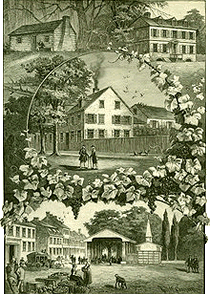 His name has not been found on the rolls or in the minutes of any of the Monthly Meetings of Friends who have preserved their records, though it is a tradition among some of his descendants that he was a Quaker. His father’s name was spelled Kuster or Koster, and other similar ways, but the only record of his own name that we find is given as “Kester.”
His name has not been found on the rolls or in the minutes of any of the Monthly Meetings of Friends who have preserved their records, though it is a tradition among some of his descendants that he was a Quaker. His father’s name was spelled Kuster or Koster, and other similar ways, but the only record of his own name that we find is given as “Kester.”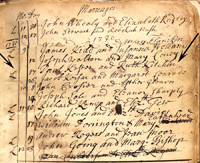
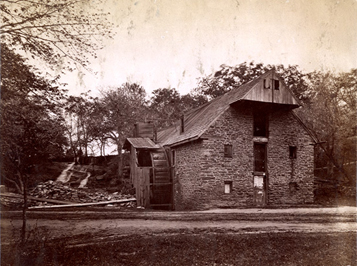 When Johannes was about 15, he came with his parents and first six siblings from Krefeld, in what is now Germany, to America about 1684 and his name is given in a list of the thirty-four first inhabitants of Germantown, Pennsylvania. He was naturalized with 61 other men by the Deputy Governor on May 7, 1691, and was listed as a Quaker. Shortly before October 31, 1692, Johannes married Elizabeth Cassell, as on that date it is recorded as having already happened in the Abington Monthly Meeting Minutes. See Elizabeth Cassell below for marriage and children.
When Johannes was about 15, he came with his parents and first six siblings from Krefeld, in what is now Germany, to America about 1684 and his name is given in a list of the thirty-four first inhabitants of Germantown, Pennsylvania. He was naturalized with 61 other men by the Deputy Governor on May 7, 1691, and was listed as a Quaker. Shortly before October 31, 1692, Johannes married Elizabeth Cassell, as on that date it is recorded as having already happened in the Abington Monthly Meeting Minutes. See Elizabeth Cassell below for marriage and children.
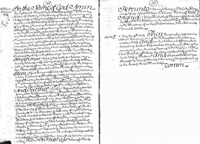
 To see whatthe Wells family meant to Rebecca and William, all you need do is read John Jr’s will dated July 16, 1748. He left “William Kitchin of Solebury, Weaver, 105 acres I live on in Solebury Twp.” (William and Rebecca’s son, William); “. . . and Mary, dau. of Paul Kester, have Doz. Diaper Napkins” (Mary was the daughter of ancestors Paul Kester and Ruth Kitchin, daughter of William and Rebecca.); He left money to “John Norton of Bucks Co. Schoolmaster.Aaron and Thomas Phillips sons of Thomas. Moses Kitchin, son of Thomas.” (Aaron and Thomas are Rebecca’s sons by her second marriage.) He then states “Wm. Kitchin to wall in my Grave Yard with stone and lime.” It seems John Wells Jr. cared deeply for both William and Rebecca.
To see whatthe Wells family meant to Rebecca and William, all you need do is read John Jr’s will dated July 16, 1748. He left “William Kitchin of Solebury, Weaver, 105 acres I live on in Solebury Twp.” (William and Rebecca’s son, William); “. . . and Mary, dau. of Paul Kester, have Doz. Diaper Napkins” (Mary was the daughter of ancestors Paul Kester and Ruth Kitchin, daughter of William and Rebecca.); He left money to “John Norton of Bucks Co. Schoolmaster.Aaron and Thomas Phillips sons of Thomas. Moses Kitchin, son of Thomas.” (Aaron and Thomas are Rebecca’s sons by her second marriage.) He then states “Wm. Kitchin to wall in my Grave Yard with stone and lime.” It seems John Wells Jr. cared deeply for both William and Rebecca. 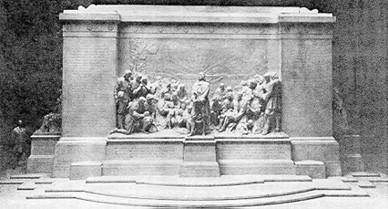 Germantown, Pennsylvania, was founded by these German settlers. The founding day of Germantown on October 6, 1683, is remembered as German-American Day, an annual holiday in the United States. These earlier immigrants were townspeople of the artisan and business class, rapidly establishing Germantown, which was eventually incorporated into modern-day Philadelphia, as the intellectual capital of Germans throughout America. Their migration, and the many Germans that followed, became known as the Pennsylvania Dutch, being a variation of the German, Deutsch. A map of early Germantown shows a number of family names associated with the Kesters. These include Arets, which was Paul’s father’s given name; and op de Graef, which some researchers say is Gertude’s mother’s maiden name.
Germantown, Pennsylvania, was founded by these German settlers. The founding day of Germantown on October 6, 1683, is remembered as German-American Day, an annual holiday in the United States. These earlier immigrants were townspeople of the artisan and business class, rapidly establishing Germantown, which was eventually incorporated into modern-day Philadelphia, as the intellectual capital of Germans throughout America. Their migration, and the many Germans that followed, became known as the Pennsylvania Dutch, being a variation of the German, Deutsch. A map of early Germantown shows a number of family names associated with the Kesters. These include Arets, which was Paul’s father’s given name; and op de Graef, which some researchers say is Gertude’s mother’s maiden name.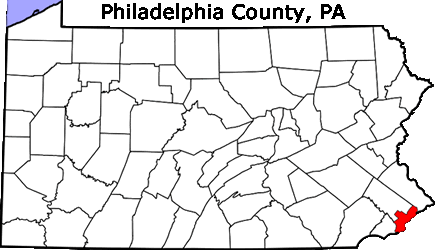
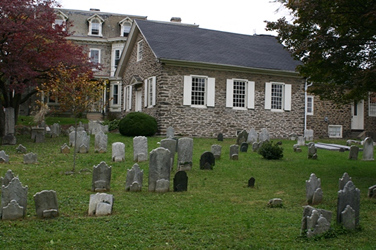 It should be noted that in Paul's will, his three sons, Arnold, Hermanus and Johannes Kiister, signed their names Custer, Kusters and Kosters respectively, and in the letters of administration on the estate of Paul and his wife the names of his sons (though no doubt here written by a clerk) are spelled in several different ways, and subsequent records show still greater changes in these names among later generations. The descendants of Arnold Kiister have spelled the name Kustur, Kostard, Kister, Kishter and “all sorts of ways;” the descendants of Hermanus Küster are believed, in the main, to have spelled it Custer, and all descendants of Johannes Kiister or Koster, so far as known, have spelled it Kester. Arnold Kuster was the 3rd great grandfather of General George Armstrong Custer.
It should be noted that in Paul's will, his three sons, Arnold, Hermanus and Johannes Kiister, signed their names Custer, Kusters and Kosters respectively, and in the letters of administration on the estate of Paul and his wife the names of his sons (though no doubt here written by a clerk) are spelled in several different ways, and subsequent records show still greater changes in these names among later generations. The descendants of Arnold Kiister have spelled the name Kustur, Kostard, Kister, Kishter and “all sorts of ways;” the descendants of Hermanus Küster are believed, in the main, to have spelled it Custer, and all descendants of Johannes Kiister or Koster, so far as known, have spelled it Kester. Arnold Kuster was the 3rd great grandfather of General George Armstrong Custer. 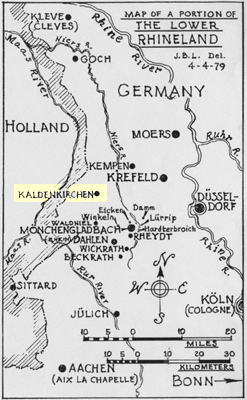 Gertrude Doors was born about 1645 in Kaldenkirchen, Viersen, North Rhine-Westphalia, Germany. She was the third of eleven children born to Matthias Theis Doors, sometimes called Mathew, and Neessgen Doors, sometimes called Ness or Agnes. Two large families of Doors (Dohrs) lived in the Kaldenkirchen vicinity during 17th century. One of the families lived in a marshy area near the village of Kaldenkirchen. It was located in the forest near the Dutch border. The Catholic and Reformed churches that the Doors families attended are still there today, across the street from each other. It was six to thirteen miles from Krefeld. (Mouse over map right.) The Doors and Kuster families that emigrated from these two villages to America, probably to escape religious persecution, were founders of Germantown, Pennsylvania.
Gertrude Doors was born about 1645 in Kaldenkirchen, Viersen, North Rhine-Westphalia, Germany. She was the third of eleven children born to Matthias Theis Doors, sometimes called Mathew, and Neessgen Doors, sometimes called Ness or Agnes. Two large families of Doors (Dohrs) lived in the Kaldenkirchen vicinity during 17th century. One of the families lived in a marshy area near the village of Kaldenkirchen. It was located in the forest near the Dutch border. The Catholic and Reformed churches that the Doors families attended are still there today, across the street from each other. It was six to thirteen miles from Krefeld. (Mouse over map right.) The Doors and Kuster families that emigrated from these two villages to America, probably to escape religious persecution, were founders of Germantown, Pennsylvania.
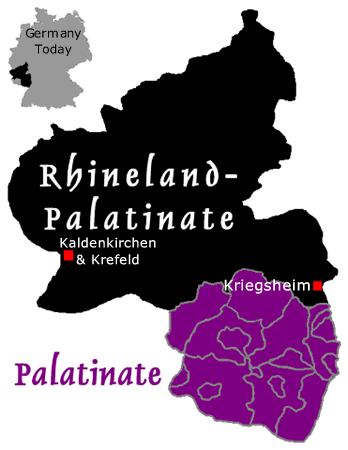 Johannes Cassell was born about 1639 in Kriegsheim, Germany (mouse over map to see more detail). He is believed to be one of five children born to Yelles Julius Kassel and his wife. Johannes became a weaver, married a women named Mary and had five children. See his wife’s bio below for more about the children. Johannes was raised in a Mennonite family, his father and three brothers were Mennonite preachers. When Johannes and his brothers heard William Penn speak in 1681, Johannes agreed with Penn and became a Quaker, against his family’s wishes. His brother Heinrich, a highly influential person, wrote attacks on those Mennonites who became Quakers, especially his own brother. Johannes became a member of the Friends of Krisheim, and is mentioned in a brief memorandum in the Karlsruhe archives, dated Kriegsheim District, Florsheim, August 11, 1684, as follows: “The Quakers at Kriegsheim, formerly Mennonites but now Quakers: Henrich Gerhards, Peter Schumacher, Georg Schumacher's widow, Johannes Castle, Stofel Morett, Johannes Gerhard's widow.” The Friends refused to pay the government demanded church fees and the Turkish-war taxes, as these were contrary to their religious principles. In William Isaac Hull’s book William Penn and the Dutch Quaker Migration to Pennsylvania, he states, “Their refusal also to stand sentinel at the town's walls was the last straw which broke the patience of the electoral steward at Hochheim, Herr Schmal by name, who was spurred on by it to petition the government to order the banishment of ‘the foolish sect’. The influence of the Princess Elisabeth at the electoral court was evidently still too strong in behalf of the Quakers, and the edict of banishment was not issued.”
Johannes Cassell was born about 1639 in Kriegsheim, Germany (mouse over map to see more detail). He is believed to be one of five children born to Yelles Julius Kassel and his wife. Johannes became a weaver, married a women named Mary and had five children. See his wife’s bio below for more about the children. Johannes was raised in a Mennonite family, his father and three brothers were Mennonite preachers. When Johannes and his brothers heard William Penn speak in 1681, Johannes agreed with Penn and became a Quaker, against his family’s wishes. His brother Heinrich, a highly influential person, wrote attacks on those Mennonites who became Quakers, especially his own brother. Johannes became a member of the Friends of Krisheim, and is mentioned in a brief memorandum in the Karlsruhe archives, dated Kriegsheim District, Florsheim, August 11, 1684, as follows: “The Quakers at Kriegsheim, formerly Mennonites but now Quakers: Henrich Gerhards, Peter Schumacher, Georg Schumacher's widow, Johannes Castle, Stofel Morett, Johannes Gerhard's widow.” The Friends refused to pay the government demanded church fees and the Turkish-war taxes, as these were contrary to their religious principles. In William Isaac Hull’s book William Penn and the Dutch Quaker Migration to Pennsylvania, he states, “Their refusal also to stand sentinel at the town's walls was the last straw which broke the patience of the electoral steward at Hochheim, Herr Schmal by name, who was spurred on by it to petition the government to order the banishment of ‘the foolish sect’. The influence of the Princess Elisabeth at the electoral court was evidently still too strong in behalf of the Quakers, and the edict of banishment was not issued.”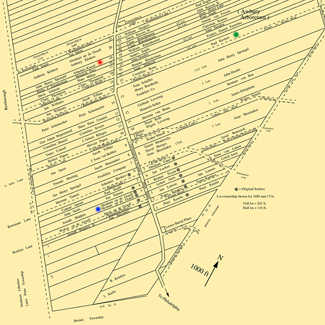
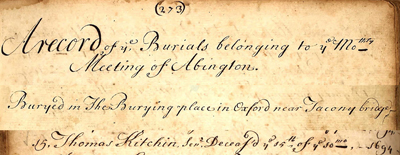

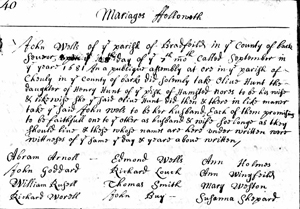
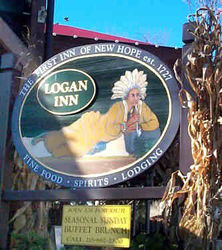 About 1719 the Pennsylvania Assembly passed an act granting John Wells the ferry for seven years. This was one of the most important ferries, being on the Lower York Road, a direct route of travel to East Jersey and New York, sharing its importance with Mitchell's Ferry, now Centre Bridge, on the Upper York Road. The Lieutenant Governor renewed his license to keep the ferry for another seven years. When this had expired John, Thomas and Richard Penn, Proprietaries and Governors of the province, granted the ferry to Wells. To quote this grant in part “Whereas John Wells of Solebury in the county of Bucks, having at considerable charge and expense erected and settled a ferry over the river Delaware, next above our Manor of Highlands, for the ready accommodation and passage of persons traveling from this province to the Jersies and New York.” This was for an additional seven years to him and his heirs excluding and prohibiting all other ferries for four miles above or below. The yearly rent being 40 shillings to be paid at Pennsbury on the first day of March.
About 1719 the Pennsylvania Assembly passed an act granting John Wells the ferry for seven years. This was one of the most important ferries, being on the Lower York Road, a direct route of travel to East Jersey and New York, sharing its importance with Mitchell's Ferry, now Centre Bridge, on the Upper York Road. The Lieutenant Governor renewed his license to keep the ferry for another seven years. When this had expired John, Thomas and Richard Penn, Proprietaries and Governors of the province, granted the ferry to Wells. To quote this grant in part “Whereas John Wells of Solebury in the county of Bucks, having at considerable charge and expense erected and settled a ferry over the river Delaware, next above our Manor of Highlands, for the ready accommodation and passage of persons traveling from this province to the Jersies and New York.” This was for an additional seven years to him and his heirs excluding and prohibiting all other ferries for four miles above or below. The yearly rent being 40 shillings to be paid at Pennsbury on the first day of March.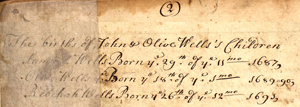
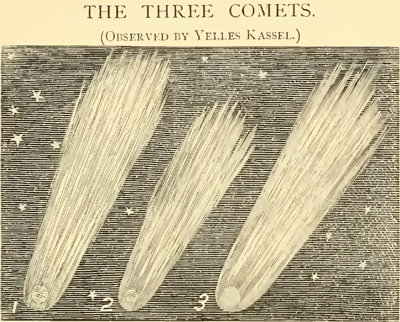 Yelles was a humble Mennonite preacher and community leader in Kriesheim, in the Palatinate (Pfalz) area of Germany. Because of his religious beliefs, Yelles and his family moved from town to town, hiding from the authorities, but kept their home in the Kriesheim. Through his writings, especially his poetry we learn he was a man of enduring faith who went through many hardships, including the Thirty Years' War. His grandson, Yelliso Kasel stated, “After the war was closed, and they again came home, he collected all his manuscripts together and wrote them nicely in a book dated the 28th of November, 1665.” One of Yelles’ writings published in Daniel Kolb Cassel’s book is about his sightings of several comets in 1618, 1644, and 1665. (Mouse over image left.) He thought they were a warning from God and was “concerned about their signification. Many may learn it to their own sorrow.” He said “I also saw the great comet in the year 1618, and soon after that the great misery and affliction in Germany commenced, as many may yet know.” It should be noted that in 1618 the Thirty Years' War began.
Yelles was a humble Mennonite preacher and community leader in Kriesheim, in the Palatinate (Pfalz) area of Germany. Because of his religious beliefs, Yelles and his family moved from town to town, hiding from the authorities, but kept their home in the Kriesheim. Through his writings, especially his poetry we learn he was a man of enduring faith who went through many hardships, including the Thirty Years' War. His grandson, Yelliso Kasel stated, “After the war was closed, and they again came home, he collected all his manuscripts together and wrote them nicely in a book dated the 28th of November, 1665.” One of Yelles’ writings published in Daniel Kolb Cassel’s book is about his sightings of several comets in 1618, 1644, and 1665. (Mouse over image left.) He thought they were a warning from God and was “concerned about their signification. Many may learn it to their own sorrow.” He said “I also saw the great comet in the year 1618, and soon after that the great misery and affliction in Germany commenced, as many may yet know.” It should be noted that in 1618 the Thirty Years' War began.